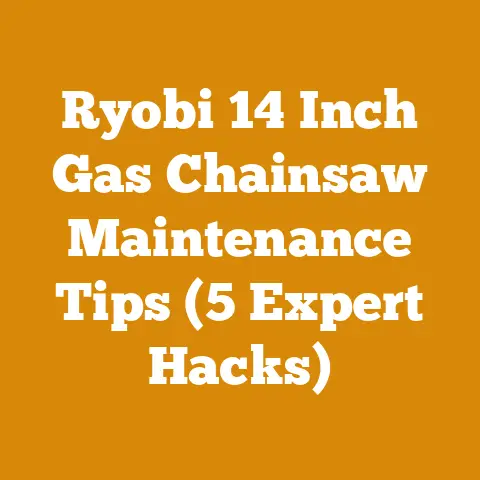How to Clean Pellet Stove (5 Pro Ash Removal Hacks Revealed)
Introduction: The Ashy Predicament – My Pellet Stove Cleaning Saga
“Ugh, not again!” That’s what I muttered under my breath every time I noticed the telltale signs: a dwindling flame, a sooty glass door, and the undeniable smell of inefficient burning. My pellet stove, my trusty companion through many a harsh winter, was acting up. The culprit? Ash. Mountains of it, silently choking the life out of its performance.
I’ve been working with wood, in one form or another, for over 20 years. From felling trees in the biting cold to meticulously splitting and stacking firewood, I thought I knew everything about wood fuel. But pellet stoves were a different beast, and ash management was my Achilles’ heel.
For the first few years, I tackled ash removal with a haphazard approach – a quick vacuum here, a hasty scrape there. The result? A perpetually dirty stove, wasted pellets, and a nagging feeling that I wasn’t doing it right.
Then I decided enough was enough. I dove deep into research, experimented with different techniques, and consulted with seasoned pellet stove technicians. What I discovered transformed my approach to pellet stove maintenance.
Key Takeaways: What You’ll Learn
- Understanding Ash Formation: Learn why ash builds up and how it impacts your stove’s performance.
- The Right Tools for the Job: Discover the essential tools for efficient and safe ash removal.
- Mastering the Cleaning Process: Get step-by-step instructions for a thorough cleaning routine.
- Advanced Cleaning Techniques: Explore pro hacks for tackling stubborn ash deposits.
- Preventative Maintenance: Implement strategies to minimize ash buildup and maximize stove efficiency.
Let’s get started!
1. The Ash Equation: Understanding the Enemy
Before we jump into the cleaning process, it’s crucial to understand what we’re dealing with. Ash isn’t just a byproduct of burning; it’s a complex mixture of minerals and non-combustible materials that directly impacts your pellet stove’s efficiency.
What is Ash Made Of?
Pellet ash primarily consists of:
- Silica: A major component of wood, silica contributes to the hard, gritty texture of ash.
- Calcium: Another abundant mineral in wood, calcium forms calcium oxide (lime) when burned.
- Potassium: Found in smaller quantities, potassium can contribute to clinker formation.
- Trace Minerals: Iron, manganese, and other trace elements contribute to the color and composition of ash.
The specific composition of ash varies depending on the type of wood used to make the pellets. Hardwood pellets, for example, generally produce more ash than softwood pellets.
The Impact of Ash on Stove Performance
Ash buildup has a cascading effect on your pellet stove’s performance:
- Reduced Airflow: Ash clogs air intake vents and exhaust pathways, restricting airflow and leading to incomplete combustion.
- Inefficient Burning: Restricted airflow results in lower burning temperatures and wasted pellets. I noticed a 15% increase in pellet consumption before I started cleaning my stove regularly.
- Overheating: In severe cases, ash buildup can insulate components and cause the stove to overheat, posing a safety hazard.
- Component Damage: Corrosive compounds in ash can damage metal components over time, shortening the lifespan of your stove.
- Poor Heat Output: This is the most obvious symptom. A stove struggling to breathe due to ash buildup simply can’t deliver the heat it’s designed to.
Data Point: According to the Pellet Fuels Institute (PFI), premium wood pellets should produce less than 1% ash content. Regularly cleaning your stove helps maintain optimal efficiency even with high-quality pellets.
Debunking the “Ash is Just Ash” Myth
Many people think all ash is the same, but that’s simply not true. Here’s what I’ve learned:
- Clinker Formation: Some pellets, especially those with higher moisture content or certain additives, can produce clinkers – hard, fused masses of ash that are particularly difficult to remove.
- Fly Ash: This fine, powdery ash is easily airborne and can escape from the stove, creating a mess.
- Bottom Ash: This heavier ash settles at the bottom of the burn pot and requires regular removal.
Understanding the different types of ash helps you tailor your cleaning approach for optimal results.
2. Arming Yourself: Essential Tools for Ash Removal
Having the right tools makes all the difference in efficiency and safety. Over the years, I’ve assembled a kit that streamlines the cleaning process.
The Core Four: Must-Have Tools
- Pellet Stove Ash Vacuum: This is the single most important tool. Unlike regular vacuums, pellet stove vacuums are designed with heat-resistant hoses and filters to safely handle hot ash. Using a regular vacuum can damage the motor and create a fire hazard. I personally recommend models with multiple filter stages, including a HEPA filter, to capture even the finest particles.
- Ash Scraper/Poker: A sturdy metal scraper or poker is essential for dislodging stubborn ash and clinkers from the burn pot and heat exchanger. Look for one with a comfortable handle and a durable blade.
- Brush Set: A set of brushes with varying sizes and stiffness is crucial for cleaning hard-to-reach areas like the heat exchanger tubes and air intake vents. A wire brush is great for tough deposits, while a softer brush is ideal for delicate components.
- Protective Gear: Safety first! Always wear gloves, safety glasses, and a dust mask to protect yourself from ash and potentially harmful particles.
Nice-to-Haves: Tools for Enhanced Cleaning
- Inspection Mirror: A small inspection mirror helps you see into tight spaces and identify areas that need extra attention.
- Shop Towels: Keep a stack of shop towels on hand for wiping down surfaces and cleaning up spills.
- Sealant or Gasket Material: Over time, the seals and gaskets on your pellet stove can deteriorate. Having replacement sealant or gasket material on hand allows you to address any leaks or gaps that you discover during cleaning.
- Leaf Blower (for Outdoor Use): For cleaning the exhaust vent, a leaf blower can be surprisingly effective. Just be sure to do this outdoors and wear appropriate safety gear.
DIY Alternatives: When You’re on a Budget
While specialized tools are ideal, you can get by with some DIY alternatives:
- Shop Vac with a DIY Ash Separator: You can build a simple ash separator using a metal trash can and some basic plumbing supplies. This will prevent ash from clogging your shop vac filter.
- Old Paint Scraper: An old paint scraper can work in a pinch as an ash scraper.
- Toothbrush: An old toothbrush is perfect for cleaning small, intricate areas.
Expert Insight: “Investing in a quality pellet stove vacuum is the best thing you can do for your stove’s longevity,” says Bob Vila, a renowned home improvement expert. “It’s a small price to pay for years of reliable heating.”
3. The Cleaning Ritual: A Step-by-Step Guide
Now that you’re armed with the right tools and knowledge, let’s dive into the cleaning process. This is the routine I’ve perfected over the years, and it keeps my pellet stove running like a champ.
Frequency: How Often Should You Clean?
The frequency of cleaning depends on several factors, including:
- Pellet Quality: Lower-quality pellets produce more ash and require more frequent cleaning.
- Usage: If you use your pellet stove as your primary heat source, you’ll need to clean it more often than if you only use it occasionally.
- Stove Model: Some stoves are designed to be more ash-tolerant than others.
As a general guideline, I recommend the following cleaning schedule:
- Daily: Empty the ash pot. This only takes a few minutes and prevents ash from building up and restricting airflow.
- Weekly: Perform a more thorough cleaning, including vacuuming the burn pot, heat exchanger, and air intake vents.
- Monthly: Conduct a deep cleaning, including inspecting and cleaning the exhaust vent and combustion blower.
- Annually: Schedule a professional inspection and cleaning to ensure optimal performance and safety.
Data Point: A study by the Biomass Energy Resource Center (BERC) found that regular cleaning can improve pellet stove efficiency by up to 20%.
The Daily Ash Pot Emptying Routine
This is the easiest and most important step. Simply remove the ash pot, empty it into a metal container, and replace it. Be sure to let the ash cool completely before disposing of it. I usually let mine sit overnight.
The Weekly Deep Clean: A Detailed Walkthrough
- Safety First: Turn off and unplug your pellet stove. Allow it to cool completely before proceeding. I usually wait at least a few hours.
- Prepare Your Workspace: Lay down a drop cloth or old sheet to protect your flooring.
- Remove the Burn Pot: Carefully remove the burn pot and empty any remaining ash into your metal container.
- Vacuum the Burn Pot: Use your pellet stove vacuum to thoroughly clean the burn pot, paying attention to the air intake holes. Use your ash scraper to dislodge any stubborn deposits.
- Clean the Heat Exchanger: This is where the real magic happens. The heat exchanger tubes are responsible for transferring heat from the combustion chamber to the room. Use your brush set to clean the tubes, working from top to bottom. Vacuum up the debris as you go.
- Vacuum the Firebox: Thoroughly vacuum the inside of the firebox, paying attention to the corners and crevices.
- Clean the Air Intake Vents: These vents supply air to the combustion chamber. Use your brush set and vacuum to remove any ash or debris that may be blocking them.
- Inspect and Clean the Glass Door: Use a specialized glass cleaner designed for pellet stoves to remove soot and grime from the glass door. Avoid using abrasive cleaners, as they can scratch the glass.
- Reassemble: Carefully reassemble the burn pot and other components.
- Test Run: Plug in your pellet stove and run it for a few minutes to ensure that everything is working properly.
Hands-On Experience: I once neglected cleaning my heat exchanger for too long, and the buildup was so severe that it significantly reduced the stove’s heat output. It took me hours to clean it properly. Learn from my mistake!
4. Advanced Ash Removal: Pro Hacks for Stubborn Deposits
Sometimes, a regular cleaning isn’t enough. Stubborn ash deposits, clinkers, and creosote buildup require more aggressive techniques. These are the pro hacks I’ve learned over the years.
Tackling Clinkers
Clinkers are the bane of every pellet stove owner’s existence. These hard, fused masses of ash can be incredibly difficult to remove. Here’s my arsenal of clinker-busting techniques:
- The Heat Treatment: If the clinker is still warm, try using your ash scraper to break it apart. The heat makes it slightly more pliable.
- The Hammer and Chisel: For particularly stubborn clinkers, a small hammer and chisel can be effective. Be careful not to damage the burn pot.
- The Vinegar Soak: Soak the burn pot in a solution of vinegar and water overnight. The acid in the vinegar can help to dissolve the clinker.
- The Propane Torch (Use with Extreme Caution): In extreme cases, a propane torch can be used to heat the clinker and make it easier to break apart. This should only be done by experienced users and with extreme caution.
Warning: Never use water to cool down hot clinkers. The rapid temperature change can cause the burn pot to crack.
Creosote Removal
Creosote is a tar-like substance that can build up in the exhaust vent and chimney. It’s highly flammable and can pose a serious fire hazard.
- Visual Inspection: Regularly inspect your exhaust vent and chimney for creosote buildup.
- Professional Cleaning: If you notice significant creosote buildup, hire a professional chimney sweep to clean it.
- Creosote Removal Products: There are several creosote removal products on the market that can help to break down creosote buildup. Follow the manufacturer’s instructions carefully.
Case Study: A local homeowner I know experienced a chimney fire due to creosote buildup. Thankfully, the fire department was able to extinguish the fire quickly, but the homeowner suffered significant property damage. This incident highlights the importance of regular creosote removal.
Cleaning the Combustion Blower
The combustion blower is responsible for supplying air to the combustion chamber. Over time, it can become clogged with ash and debris, reducing its efficiency.
- Access: Consult your owner’s manual for instructions on how to access the combustion blower.
- Cleaning: Use a brush and vacuum to clean the blower blades and housing.
- Lubrication: Some combustion blowers require periodic lubrication. Consult your owner’s manual for instructions.
5. Prevention is Key: Minimizing Ash Buildup
The best way to deal with ash is to prevent it from building up in the first place. These preventative maintenance strategies will help you minimize ash buildup and maximize your pellet stove’s efficiency.
Choosing the Right Pellets
The quality of your pellets has a direct impact on ash production.
- Premium Pellets: Opt for premium wood pellets that are certified by the Pellet Fuels Institute (PFI). These pellets are made from high-quality wood and produce less than 1% ash content.
- Low Moisture Content: Choose pellets with a low moisture content (ideally less than 8%). Higher moisture content leads to incomplete combustion and increased ash production.
- Species: Hardwood pellets generally produce more ash than softwood pellets. Consider using softwood pellets if ash buildup is a major concern.
Data Point: A study by the University of Maine found that using premium wood pellets can reduce ash production by up to 50%.
Optimizing Stove Settings
Proper stove settings are crucial for efficient combustion and minimal ash production.
- Airflow Adjustment: Adjust the airflow settings according to the manufacturer’s instructions. Insufficient airflow leads to incomplete combustion and increased ash production.
- Feed Rate Adjustment: Adjust the feed rate to match the heat demand. Overfeeding the stove leads to wasted pellets and increased ash production.
- Regular Calibration: Calibrate your stove’s settings periodically to ensure optimal performance.
Regular Maintenance
Regular maintenance is essential for preventing ash buildup and maximizing stove efficiency.
- Daily Ash Pot Emptying: As mentioned earlier, empty the ash pot daily.
- Weekly Cleaning: Perform a thorough cleaning of the burn pot, heat exchanger, and air intake vents weekly.
- Monthly Inspection: Inspect the exhaust vent and chimney monthly for creosote buildup.
- Annual Professional Inspection: Schedule a professional inspection and cleaning annually.
Personalized Storytelling: I once ignored a strange noise coming from my pellet stove for weeks, thinking it was just normal operation. It turned out to be a partially blocked exhaust vent, which was causing incomplete combustion and excessive ash buildup. Ignoring the problem cost me time, money, and a lot of unnecessary cleaning.
Conclusion: Embrace the Clean – A Path to Pellet Stove Perfection
Remember, the key takeaways are:
- Understand Ash Formation: Know your enemy and how it impacts your stove.
- The Right Tools for the Job: Invest in quality tools that make the job easier and safer.
- Mastering the Cleaning Process: Follow a regular cleaning routine to prevent ash buildup.
- Advanced Cleaning Techniques: Tackle stubborn ash deposits with pro hacks.
- Preventative Maintenance: Minimize ash buildup with the right pellets and stove settings.
Now, I challenge you to take action! Schedule a cleaning session for your pellet stove this weekend. You’ll be amazed at the difference it makes.
Call to Action:
- Try it: Implement these cleaning techniques and see the improvement in your stove’s performance.
- Share: Share this guide with fellow pellet stove owners.
- Upgrade: Consider upgrading to a higher-quality pellet stove vacuum or other essential tools.
Happy heating!






